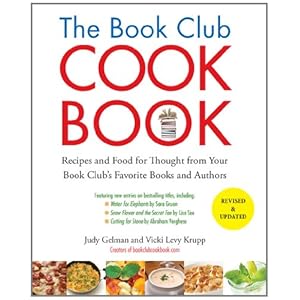Pues en los dos sitios, porque esto va de libros y y el otro de recetas.
In October 1939, Josef Kavalier escaped with his life. Trained in his native Czechoslovakia in the use of picks and tiny torque wrenches – the tools of the escapist – Joe, as he is called, smuggles himself out of the country as the Nazis sweep in. Joe escapes concealed in a coffin he shares with a giant clay statue, the Golem, which was revered and protected by the Jews of Prague for centuries.
Joe first takes refuge in his aunt and uncle’s apartment in Brooklyn, New York, sharing a bed with his cousin Sammy, a boy who “dreams of flight and transformation and escape.” The cousins quickly discover their shared fascination for escape artists – especially Harry Houdini – and a love of comic books. Within a few years, they have created The Escapist, The Monitor, Luna Moth, and other superheroes, whose adventures find their way into almost every American boy’s bedroom.
The foods served in Michael Chabon’s novel reflect the diverse cultures of 1940s New York, a city teeming with immigrants, artists, and bohemians. Joe’s girlfriend, Rosa Saks, cooks “strange recipes that her father had acquired a taste for in his travels: tagine, mole, something green and slippery that she called sleek.” Sammy’s mother, Ethel, serves Sammy and his friend Tracy Bacon traditional Eastern European food – flanken (braised short ribs of beef), challah, and, for dessert, babka.

Cocoa-Cinnamon Babka
Babka, or baba, is a breadlike cake sweetened with various fillings, including cinnamon and sugar, fruit, or chocolate. Baba means “grandmother,” or “old woman,” in Ukrainian, where the rich bread was originally baked in vertical pans to resemble a standing woman. Babka, a diminutive form of the word, is now more commonly used because modern loaves are smaller and more delicate than the originals.
For the dough:
4 ½ teaspoons (2 packets) active dry yeast
½ teaspoon plus ½ cup sugar
¼ cup warm water
1 cup nondairy creamer
½ cup (I stick) unsalted margarine, softened
1 teaspoon salt
3 eggs, lightly beaten
5-5 ½ cups all-purpose flour
For the filling and topping:
1 cup sugar
1 cup finely chopped walnuts
½ cup raisins
2 tablespoons unsweetened cocoa powder
1 tablespoon ground cinnamon
6 tablespoons unsalted margarine, melted
1 egg white, lightly beaten
1. To make the dough: Sprinkle yeast and ½ teaspoon sugar into warm water. Stir and set aside for 10 minutes, or until frothy. Grease and flour three 9 x 5-inch loaf pans.
2. Heat nondairy creamer to scalding and pour into large mixing bowl. Add margarine and stir to melt. Cool for 5 minutes. Add ½ cup sugar, salt, yeast mixture, and eggs. Gradually add enough flour to form a soft dough. Knead on floured surface 10 minutes, until shiny and elastic. Place in a greased bowl, turning to coat entire surface. Cover with a damp cloth and let rise in a warm place until doubled in size, about 1 ½ hours.
3. To make the filling and topping: In a small bowl, combine the sugar, nuts, raising, cocoa powder, and cinnamon.
4. Divide dough into 6 parts. Working with one part at a time, roll out on a lightly floured surface, forming a rectangle 8 inches wide and 1/8 inch thick. Brush some melted margarine over the dough. Sprinkle with 4-6 tablespoons nut mixture to cover three-quarters of the dough. Roll it up, tuck in the ends, and place the dough in a prepared loaf pan, seam side down. Repeat with a second part of dough and nut mixture, and tuck in alongside first roll.
5. Brush tops with egg white and sprinkle with about 2 tablespoons of nut mixture. Repeat for remaining dough. Cover lightly with a damp cloth and let rise until doubled in size, 1-1 ½ hours. Preheat oven to 350˚F.
6. Bake babka 40-45 minutes, until golden. Cool in pan for 10 minutes, then transfer to a wire rack. Serve warm.



